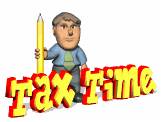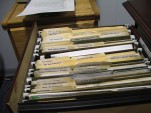No Need to Hold onto Things for the Next Generation
When I give workshops, I am asked over and over again about what should be saved for children; if you don’t have children, you may be saving these things for friends or other family members. Many parents seem to think their children want what they have, so they hold onto items for when these children will appreciate these things. Items range from baby clothes to games to books to schoolwork to china to sterling silver and include tons of paperwork.
I have a client, with whom I have been working, whose father saved every personal and business record. He had checks from 1949 to the day he died. He had his and his wife’s medical records from the 1960’s (both of whom are now deceased), 8 estates that he had settled, and business records back to the 1960’s (including his stationery and business cards – from long retired positions). While everything was very organized and labeled, sorting through it has been a tremendous burden on his daughter.
Two 4-drawer file cabinets, one 2-drawer file cabinet, 2 desks, book shelves, and chairs had been used to store this paperwork. We are shredding and recycling 98% of these records. My client wants to go through everything to make sure there is nothing of value hidden away. We have talked about why her father would have saved all of this and cannot come to any satisfying conclusion.
Not only is there paperwork, but there are also items from grandparents and other relatives. Again, my client is going through all of this to figure out what she wants to keep and what she wants to donate or sell. Since her brother does not live in the area, she has to go through all these things by herself and save some things for him to go through, including his own items.
If you are saving things for your children/friends/other family members, please ask them if they want anything. If they say no, then either sell, donate, recycle, shred, or trash the items. There is no reason for you to hang on to this stuff, unless you really want it. If it is packed away and not being used, and no one in your family wants the items, give them away now so someone else may really be able to appreciate them.
Also, keep on top of your paperwork — shred or recycle old records. Settling an estate can take a lot of time. You can significantly speed up the process by getting rid of paperwork and any unused or unwanted items now.
This type of activity will not be one of your more fun things to do, but it sure will save time and heartache in the future. The lesson my client learned from all of this is to purge and continue to get rid of those things now that she no longer needs or wants. What are you going to do now with your unwanted and unnecessary items and paperwork?

One of the most confusing parts of getting ready for tax time is knowing what documents you need to prepare your taxes. Basically, the documents break down into three categories: Income statements, deductions, and receipts.
The Challenge of Receipts
Receipts are the most challenging documents to store and organize. This is especially true if you are a small business owner. Receipts are your main protection if the IRS decides to audit and details are critical. It’s imperative to keep all receipts pertaining to business and a very good idea to get into the habit of making notes on entertainment and dining expense receipts.
Consider Scanning for Added Protection
Scanning your receipts can help solve two problems. First, if the IRS comes knocking, they won’t care that your receipts from four years ago have faded; so scanning receipts is a great way to give you that added layer of protection. Secondly, if you set up a system to scan as you go, then you won’t have to wonder where all your receipts are stored, and you won’t have to deal with that shoebox full of papers come tax time. There are many smartphone apps dedicated to receipt scanning that are easy to use and can save you hours of searching, sorting, and organizing papers during tax time.
Income Statements:
W-2 – wages and salary
W-2G – gambling winnings
Form 1099-R – retirement income
Form 1099-INT – interest
Form 1099-DIV – dividends
Form 1099-MISC – miscellaneous income, including self-employment
Form 1099-G – government payments
Form 1099-SA – MSA or HSA distributions
Form 1099-B – broker or barter exchanges
Form SSA-1099 – Social Security benefits
Form RRB-1099 – railroad retirement
Schedule K-1 – partnership income or loss
Deductions:
Form 1098 – mortgage interest
Form 1098-T – tuition
Form 1098-E – student loan interest
Receipts & Records:
Unreimbursed mileage related to work or volunteering
Charitable donations
Contributions to retirement plans
Healthcare expenses
Self-employment income and expenses, including any:
-Home-office expenses
-Health-insurance premiums paid
-Transportation costs
-Advertising fees
Rental property
Moving expenses, if you moved for a new job
Expenses for energy-efficient home improvements
Tuition or fees paid for education for you, spouse, or dependents
Retirement account rollovers
Child care and dependent care expenses, including the employer identification number (EIN) or SSN of the care provider
Additional Documents:
Your Social Security number (SSN) or taxpayer identification number (ITIN) and SSN’s or ITIN’s for spouse and dependents (if any)
Your birth date and birth date for spouse and dependents (if any)
A copy of last year’s return
Documents List Source: H&R Block
Does the thought of organizing your desktop bring music to your ears for the anticipation of the neat and orderly results of this accomplishment or does it bring painful groans of displeasure wondering how you will accomplish this seemingly impossible task for your desk?
As is the case with many tasks and projects, if we break it down into smaller parts then it’s not so overwhelming. Of course, there is always the super easy way out and that’s the complete one swipe and into the box removal. Quick, easy, and painless but I don’t think that’s really what you want to do. Especially not on National Clean Off Your Desk Day! So let’s take a look at a more organized and orderly approach.
1. Assess
First, take stock of what is on your desk. Consider what items you need to address such as: paper, files, and office supplies — along with any random items on your desk.
2. Store
Next, decide how to store these items that are currently on top of your desk.
3. Remove
Finally, remove miscellaneous items that have no relevancy to your work area. You may even find some items that are trash which is a super quick removal. Here is where the one swipe and into a box is a handy option. Make sure to return all of those random items such as books, magazines, empty coffee cups, etc. to their designated homes.
There you have it: 3 easy ways to tidy up your desktop! Optimize your productivity while at your desk by using 3 simple steps — Assess, Store, and Remove — to keep your desktop neat and organized.
I look at the last week of the year as a super productive week since I am not scheduled to work, and I can spend time getting myself ready for the new year. I want to be as organized as possible before January 5, 2015, which is my first day back to work! Below is a list of suggestions that may help you start your new year off a bit more organized.
Donations 
-If you want to maximize your donations for the 2014 tax year, take one more look through your closets, bookshelves, cabinets, attics, basements and garages to pull anything out that needs to be donated. Children’s toys and books are usually a gold mine for most donation establishments.
-After the holidays, as you integrate your new gifts, take stock of your duplicates, triplicates or otherwise unwanted things that can be better utilized by others.
-Keep in mind that you shouldn’t wait until December 31 to drop off your donations, because if the center hits their capacity level, they may stop accepting donations.
-Some donation centers will pick up your unwanted goods as long as you are on their schedule. Some donation center choices are GreenDrop, Vietnam Veterans of America, The Salvation Army, and Impact Thrift Stores.
-Make your final online cash donations as soon as possible since you don’t want to get stuck with slow or crashing websites at the last minute.
Files 
-Assuming that you have them, the end of the year is a great time to purge your old files and create new ones. If you need help creating a filing system, a professional organizer can help. You can go to the ‘Find an Organizer’ tab at the top of this page.
-Go through your 2014 bills, pull them out of their files, and clip or band them together if you are going to need them for your taxes. If you don’t need them for your taxes, I would suggest shredding anything that has personal information or account numbers. Most of my clients shred their department store bills and hold onto some of their utility bills for another year (I think they just want the security of having them…just in case).
– A filing cabinet or file box are both great choices to keep your files organized and accessible.
-If you scan your bills and receipts, remember to create new files on your computer.
Hopefully, there is something here that will help you start 2015 off with a little more organization in your world.
“Help! I can’t stand it anymore! My office is a disaster. Papers are piled everywhere. I don’t know where things are. I don’t know what supplies I have until I run out. My bulletin boards have announcements for events that happened two years ago attached to them. I’m behind on my work, and I hate being in my office. My life is a mess!”
“Was this a phone call I received from a potential client?” you may ask. No. This is what I said two weeks ago when I felt like I was drowning in paperwork, and my life was a mess. “But wait,” you exclaim. “You’re a Professional Organizer. You know how to organize stuff. Why can’t you just organize your office?” The answer is that even we, who are experienced and proficient organizing other people’s things, sometimes cannot do it for ourselves.
Every morning I would walk into my office with incredible determination. “This will be the day that I finally and completely organize my office and my life!” But when I walked into my office, something happened. I looked at the piles of paper and the disorganization, and I became paralyzed with dread.
It doesn’t matter whether the area that is disorganized is an office, a kitchen, a bedroom or a play room. Sometimes it just feels as though as much as you really, really want to get organized, you’re just having a hard time doing it. So I asked myself what I would tell a prospective client if they called me with a similar situation.

But what do you do if you can’t get yourself to commit to tackling that cluttered area for even five minutes? Take a tip from a professional who has been-there-done-that. Either call a friend who is nonjudgmental and willing to help or call a professional; which is what I did. I figured that if I call a doctor when I’m sick and go to the dentist when I have a toothache, I should call a professional organizer when it feels like my (insert name of area here) needs organizing. What about you? Take just 5 minutes and call for help. Now? Yes! If not now, when?
 Every email that comes in is an opportunity. Every Facebook article is a worthwhile read. Every free 60 page ebook is a life saver. But come on now, if you read everything you could read you would NEVER BE DONE and on top of that YOU WOULD NEVER GET TO WHAT IS MOST IMPORTANT.
Every email that comes in is an opportunity. Every Facebook article is a worthwhile read. Every free 60 page ebook is a life saver. But come on now, if you read everything you could read you would NEVER BE DONE and on top of that YOU WOULD NEVER GET TO WHAT IS MOST IMPORTANT.
I’ve been a long-time advocate for short and sweet, so I always try to keep everything I share manageable and digestible in 5 minutes or less. That’s what I can do for you.
What can you do for yourself?
If you choose to spend your time on things that just pop up and come your way you will NEVER get to the work you want to do. To be a high performer be clear on what is important and spend your time on what matters. All the rest? JUST SAY NO – LET THEM GO.